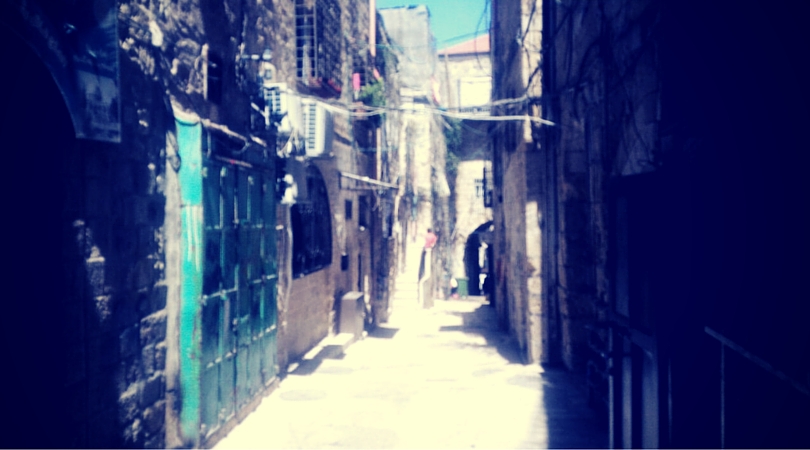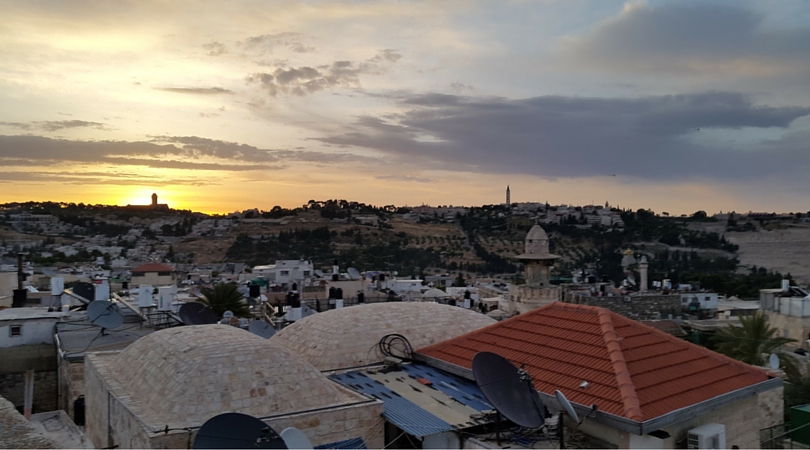Originally published on HaKol HaYehudi.
Aryeh Blumberg gathers bottles for recycling and donates the money to buy homes in Jerusalem.
Aryeh Blumberg lives in Maale Adumim and works as a plumber. In recent years Blumberg has also begun collecting bottles for Jerusalem. He collects bottles for recycling and the money he receives he gives to Ateret Cohanim to redeem property in Jerusalem.
“Jerusalem is the capital of the Jewish nation,” says Blumberg, “The world doesn’t accept this and wants to steal it from us. Jerusalem has always been ours. We can’t let them change history and steal it from us. We have to fight for Jerusalem.”
Blumberg tells the story of how he started his project after the Gaza expulsion. “I realized that if today they were expelling Jews from Gush Katif, tomorrow they could expel Jews from Jerusalem. I decided that talking wasn’t enough and I wanted to do something in practice to strengthen Jerusalem.” Blumberg explains that he wanted to donate to support Jerusalem, but his financial situation did not allow it.
“Then I realized that people always throw out their bottles in the trash and they could instead get money back for them,” says Blumberg. That thought led him to action and he began by asking Ateret Cohanim if they had a minimum donation amount. They told him they were willing to accept even small amounts and so he began his project.
“My first donation was only 140 shekels (~$40). In the first year I donated 2500 shekels, the second year 5000 shekels, the third year 8000 shekels, the year after 10,000 shekels, and every year since, it’s been around 12000 shekels,” explains Blumberg on how the project grew. “Today, thank G-d,‘donations from bottles’ have passed the 100,000 shekel point.”
Blumberg says that as the project grew, more people joined him. “There are several in Maale Adumim, and there are also several places in Jerusalem where I pick up bottles from people.”
Since he started the project, Blumberg’s yard is almost always filled with boxes of bottles, but he says “My wife agrees to it. She even helps with the project and my kids also help a lot.” Blumberg also emphasizes that all of the money from the bottles goes to Ateret Cohanim, “I don’t take any overhead and I pay for my own gas or any other expenses.”
“It’s amazing to be able to take a small thing like bottles that we throw in the garbage and use them to change the reality,” says Blumberg. “From 30 agorot (8 cents) from each bottle we reached 100,000 shekels, thank G-d. It’s possible to help the Jewish people in many ways and with G-d’s help through all of these small things we will merit to bring the Redemption.”
“The need to strengthen Jerusalem,” is what Blumberg says gives him the strength to keep going. “I can’t tell you why we were punished with the expulsion from Gaza but it was probably something small. I think we need to strengthen Jerusalem and move as many Jews as possible into the city. That’s what Ateret Cohanim does and that’s what I want to support.”
Blumberg says that, “As a result of the project my personal connection to Jerusalem has also strengthened.”
In conclusion, Blumberg tells that he once did work for a Jew who was not religious in Jerusalem. “I asked him why he chose to live in Jerusalem and he told me, ‘Jerusalem is the center of the Jewish nation.’ Jerusalem is truly our center. The world wants to take it from us but we can’t give up Jerusalem.”







